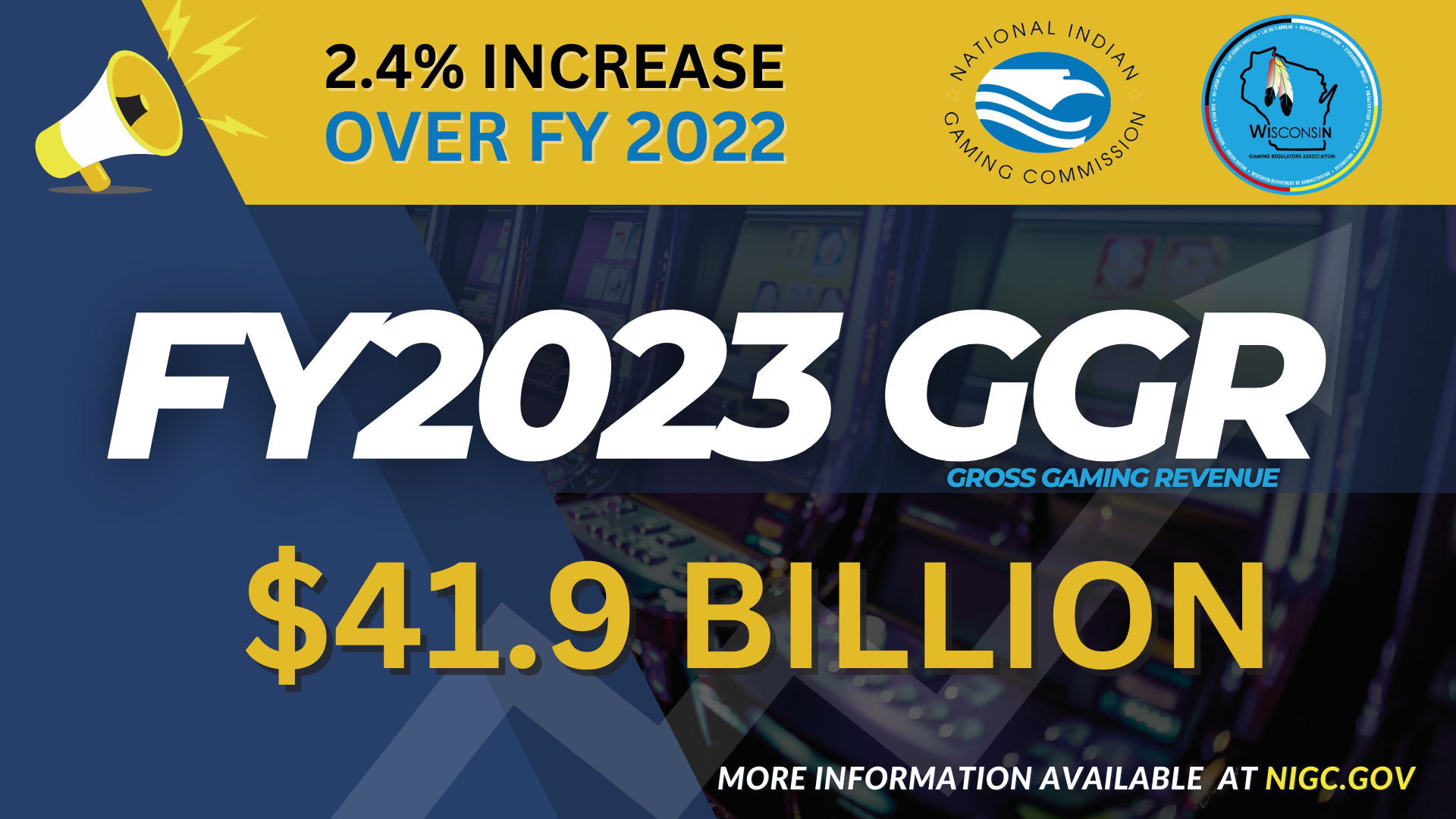
- Details
- By Native News Online Staff
The National Indian Gaming Commission (NIGC) announced this afternoon that tribal gaming revenue reached a record high of $41.9 billion in fiscal 2023.
The record revenues in fiscal ‘23 represent a 2.4% increase — roughly a $1 billion — over the $40.9 billion in tribal gaming revenue reported in fiscal 2022. The revenue growth reflects the viability of tribal gaming operations, as tribal gaming continues to adapt to technological advances and changes in consumer preferences, according to an NIGC news release issued this afternoon.
Sharon M. Avery, acting chairwoman of the NIGC, and Vice Chair Jeannie Hovland made the announcement at the Wisconsin Gaming Regulators Association Summer Conference in Green Bay, Wis. The NIGC is a federal agency established in 1988 under the Indian Gaming Regulatory Act (IGRA) to regulate and support tribal gaming.
“These results demonstrate the effectiveness of a strong regulatory framework combined with the diversity of tribal gaming operations,” Avery said in a statement. “Tribal leadership and operators have consistently shown their ability to innovate and adapt, ensuring tribal gaming remains a cornerstone of economic sustainability in Indian Country.”
In a statement, Hovland commended tribal regulators, operators and leaders for “navigating a competitive market underscores the enduring strength of tribal sovereignty and the ongoing benefits of gaming expertise for tribal nations, as envisioned by IGRA.”
“The progress really speaks to the work ethic that exists in Indian Country,” Ernie Stevens, Jr., chairman of the nonprofit Indian Gaming Association said on Thursday afternoon. “It goes from tribal leaders, Indian gaming regulators to the frontline casino employees at our facilities. They work hard every day to ensure they provide the best possible hospitality in the casinos and resorts’ restaurants and rooms.”
According to the NIGC's 2023 Annual Report, this continued growth reflects the industry's capacity to embrace technological advancements and shifting consumer preferences. Tribal operations are implementing new offerings alongside the established integrity and compliance practices that have been a hallmark of tribal gaming regulation for over three decades.
The report provides detailed information on the performance of each NIGC region and highlights the remarkable growth of tribal gaming over the past two decades. Since 2004, overall tribal gaming revenues have more than doubled, rising every year save for 2020 during the pandemic. While some have predicted a slowdown in the industry, IGA's Stevens remains optimistic about the future of tribal gaming, in part because of the important role it plays funding services for tribal citizens.
“I like to think we’ve only just begun," Stevens said. “We know it’s our responsibility to prepare for the next seven generations.”
More Stories Like This
Native News Weekly (August 25, 2024): D.C. BriefsUS Presidents in Their Own Words Concerning American Indians
Indigenous Actor Elaine Miles Reports Detention by Alleged ICE Agents
Happy Thanksgiving from Native News Online
Coming Up on Native Bidaské: Behind the Animation: Joey Clift Talks “Pow” and Native Storytelling
Help us tell the stories that could save Native languages and food traditions
At a critical moment for Indian Country, Native News Online is embarking on our most ambitious reporting project yet: "Cultivating Culture," a three-year investigation into two forces shaping Native community survival—food sovereignty and language revitalization.
The devastating impact of COVID-19 accelerated the loss of Native elders and with them, irreplaceable cultural knowledge. Yet across tribal communities, innovative leaders are fighting back, reclaiming traditional food systems and breathing new life into Native languages. These aren't just cultural preservation efforts—they're powerful pathways to community health, healing, and resilience.
Our dedicated reporting team will spend three years documenting these stories through on-the-ground reporting in 18 tribal communities, producing over 200 in-depth stories, 18 podcast episodes, and multimedia content that amplifies Indigenous voices. We'll show policymakers, funders, and allies how cultural restoration directly impacts physical and mental wellness while celebrating successful models of sovereignty and self-determination.
This isn't corporate media parachuting into Indian Country for a quick story. This is sustained, relationship-based journalism by Native reporters who understand these communities. It's "Warrior Journalism"—fearless reporting that serves the 5.5 million readers who depend on us for news that mainstream media often ignores.
We need your help right now. While we've secured partial funding, we're still $450,000 short of our three-year budget. Our immediate goal is $25,000 this month to keep this critical work moving forward—funding reporter salaries, travel to remote communities, photography, and the deep reporting these stories deserve.
Every dollar directly supports Indigenous journalists telling Indigenous stories. Whether it's $5 or $50, your contribution ensures these vital narratives of resilience, innovation, and hope don't disappear into silence.
 The stakes couldn't be higher. Native languages are being lost at an alarming rate. Food insecurity plagues many tribal communities. But solutions are emerging, and these stories need to be told.
The stakes couldn't be higher. Native languages are being lost at an alarming rate. Food insecurity plagues many tribal communities. But solutions are emerging, and these stories need to be told.
Support independent Native journalism. Fund the stories that matter.
Levi Rickert (Potawatomi), Editor & Publisher

